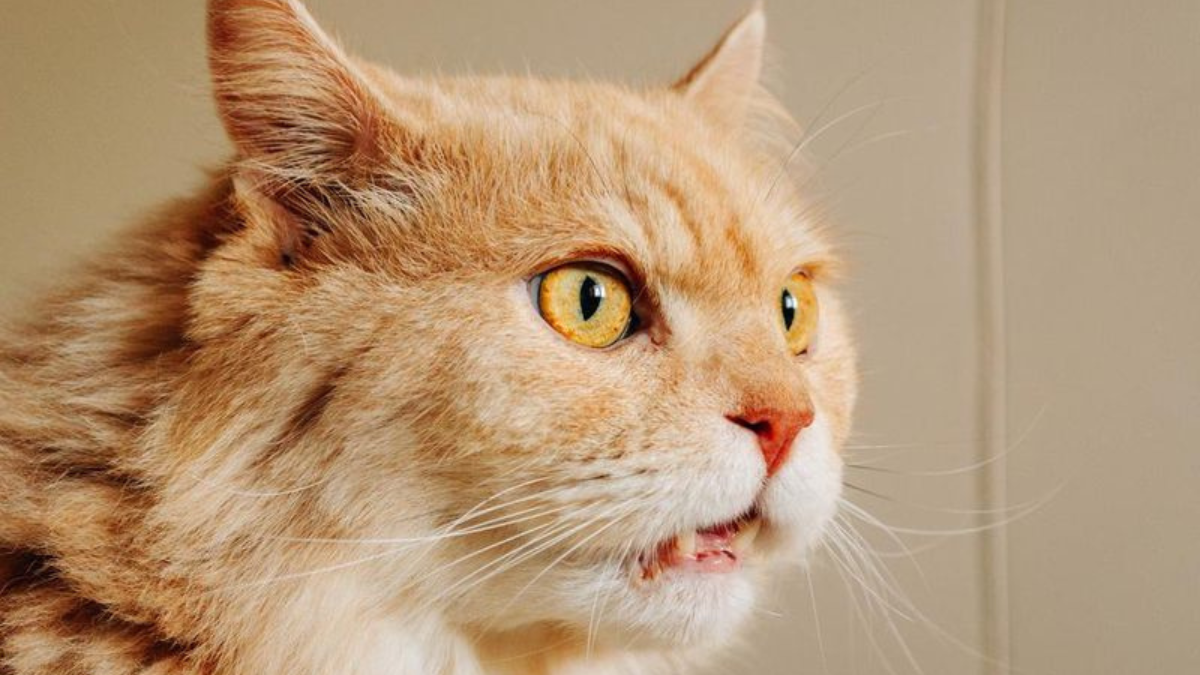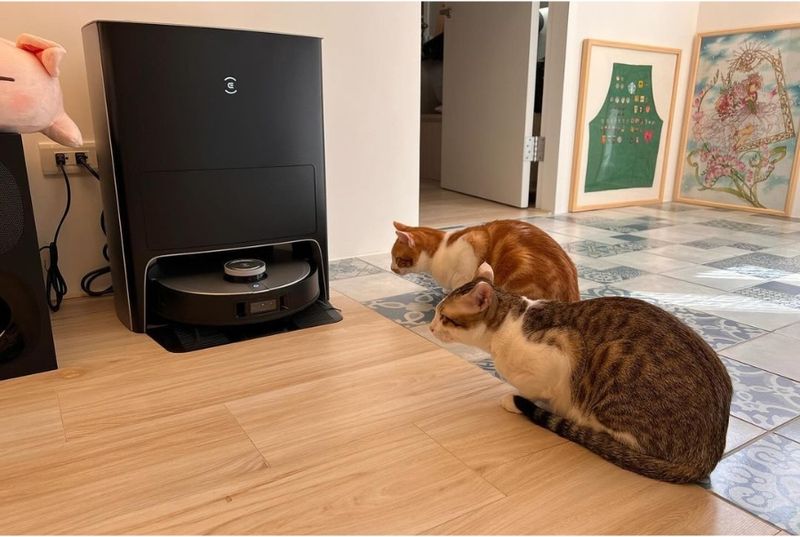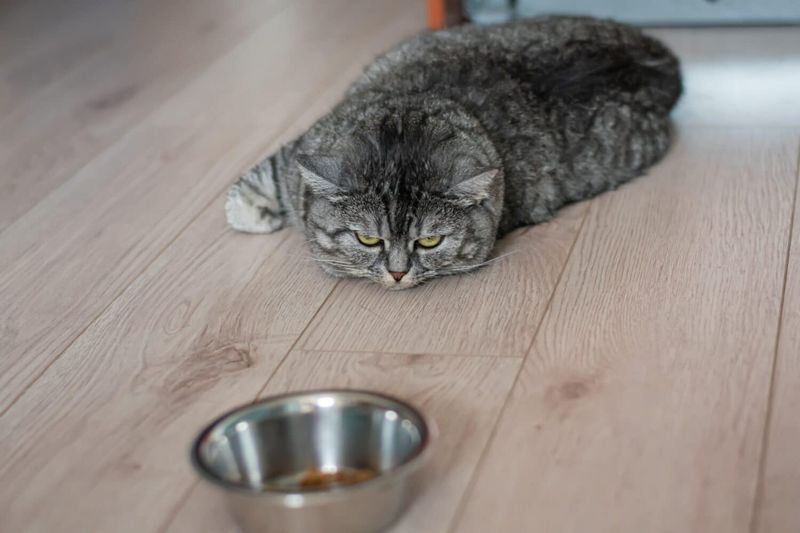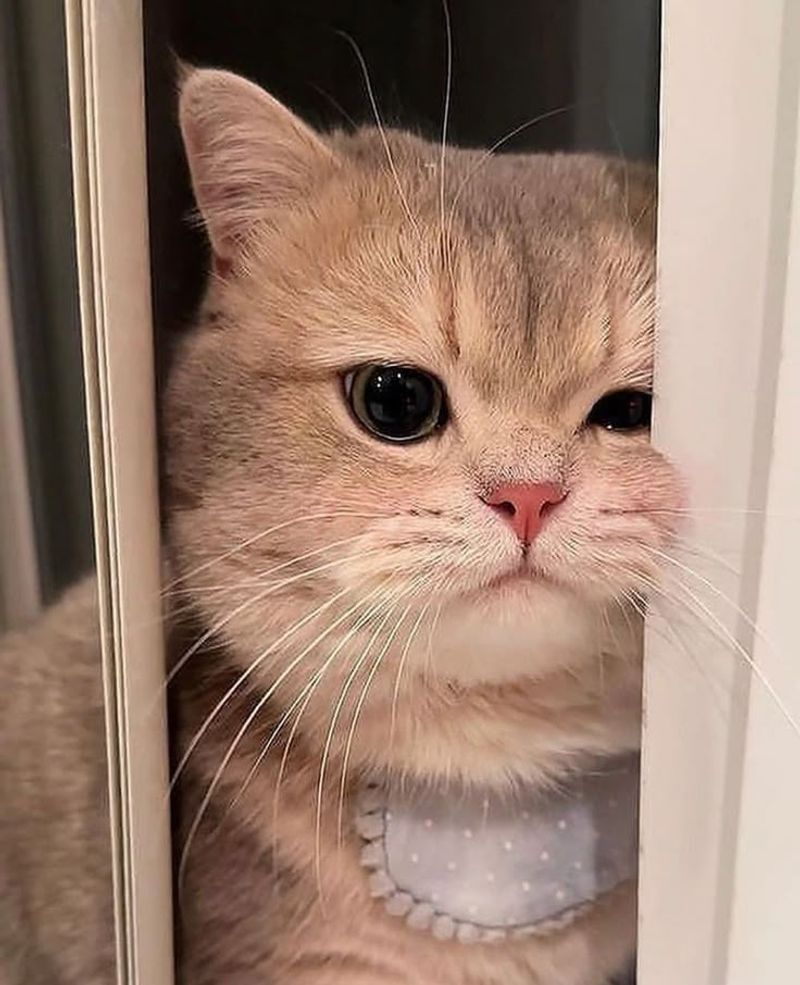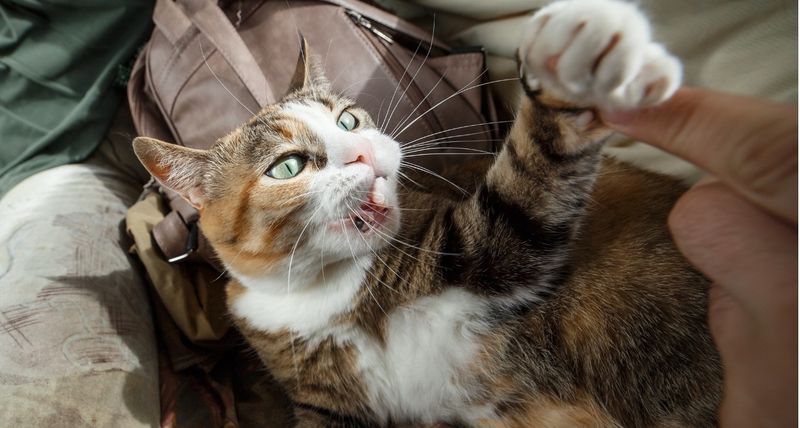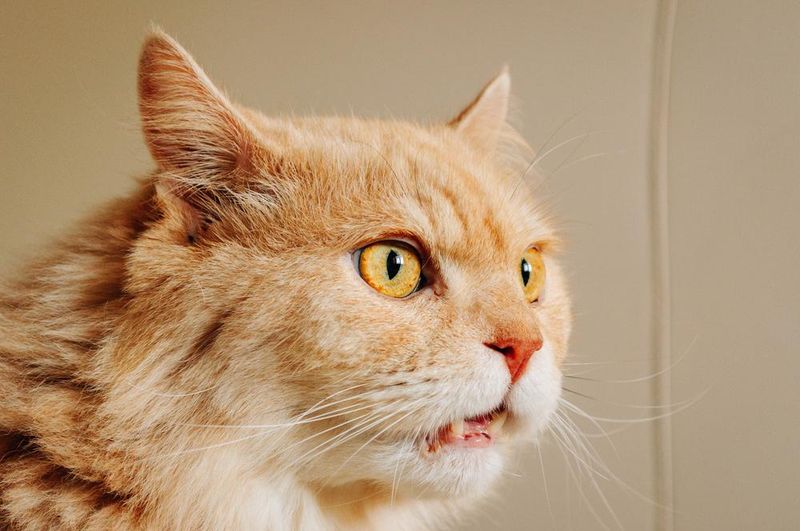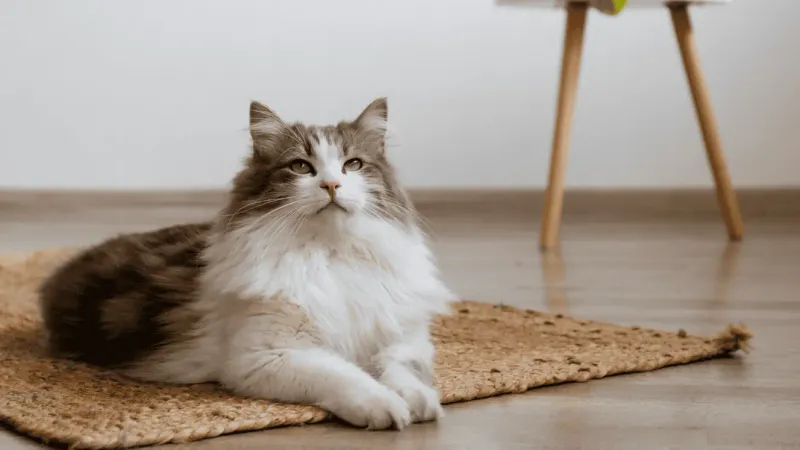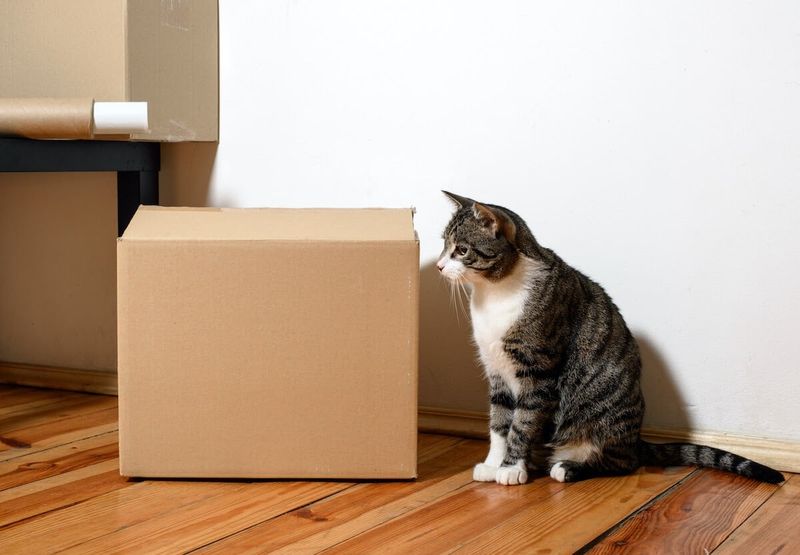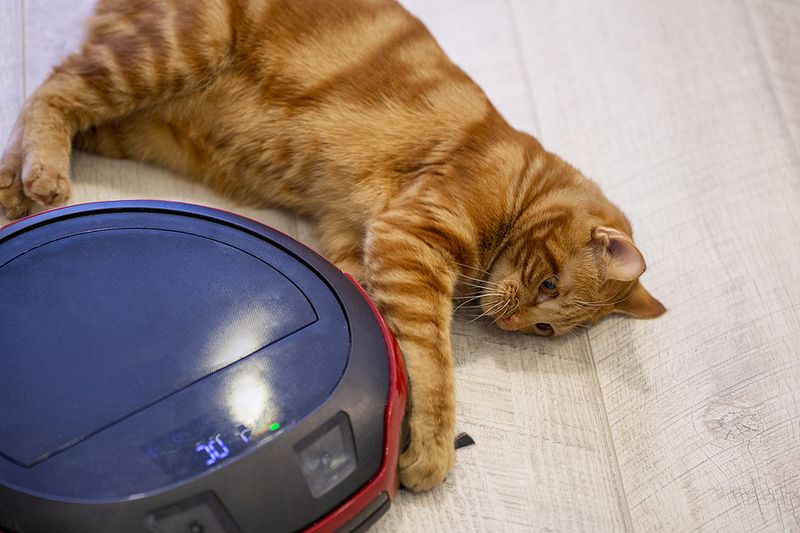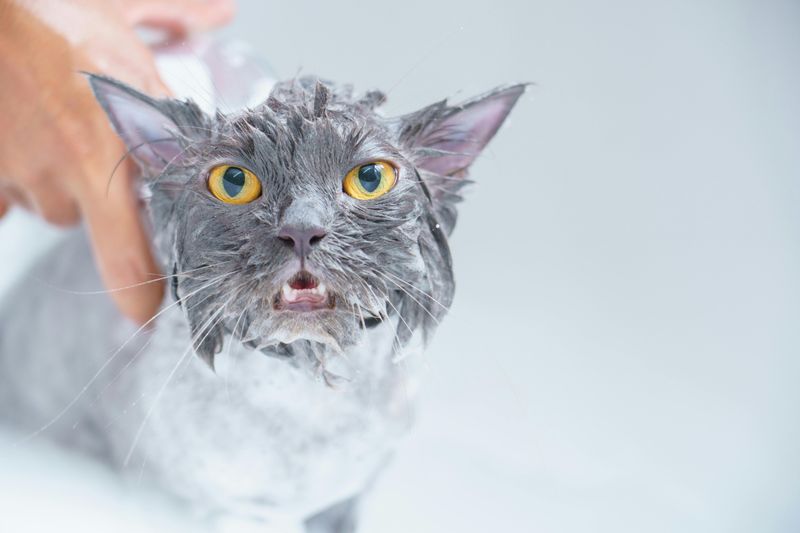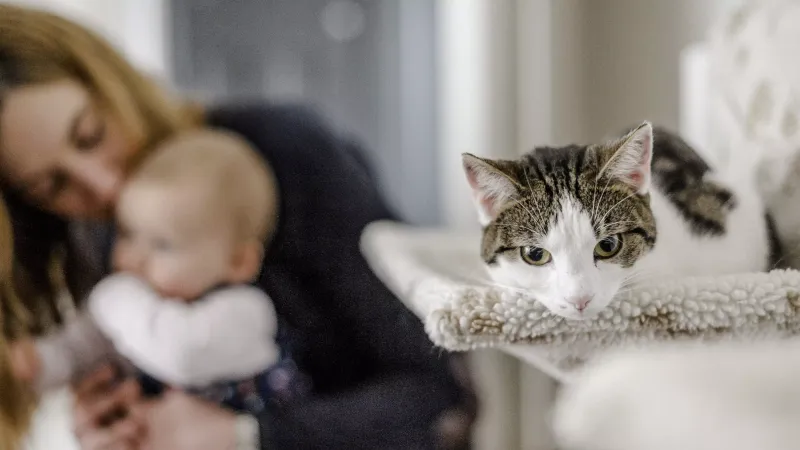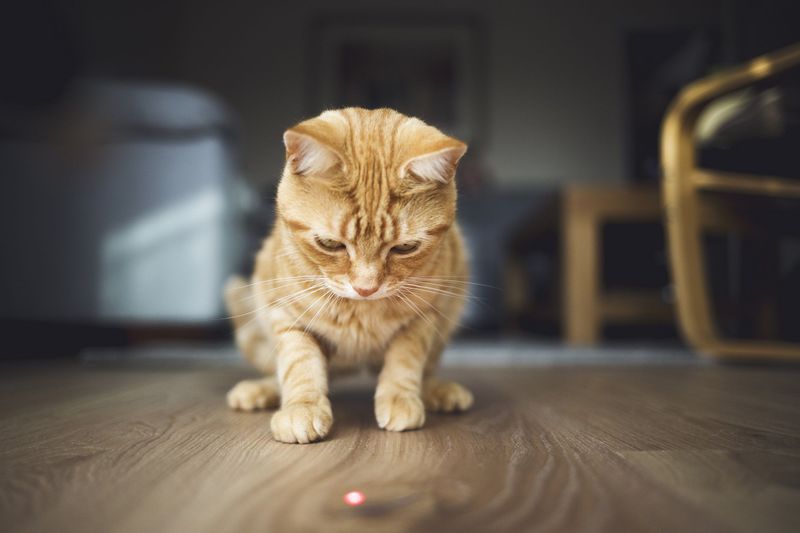📖 Table of Content:
Cats have a reputation for being enigmatic, often behaving in ways that spark curiosity and confusion. Yet, while humans may struggle to understand feline habits, the confusion often goes both ways. To a cat, many human routines seem just as strange and unpredictable.
Sudden movements, unfamiliar objects, or inconsistent behavior can easily puzzle a cat. Their world thrives on predictability, and when that balance is disrupted, uncertainty follows. What seems normal to a person may be a complete mystery to a feline observer.
Miscommunication between species can lead to missed signals or misunderstood intentions. Recognizing which behaviors might confuse a cat can reduce stress and strengthen the human-animal connection. Small changes in daily interaction can make a big difference in how secure and understood a cat feels.
1. Sudden Loud Noises
Because of their sharp auditory senses, cats are highly sensitive to unexpected noise. Even routine household sounds can become stress triggers.
Cats may associate loud sounds with potential danger, prompting them to flee or hide. Over time, they might become accustomed to certain household sounds, yet sudden noises remain confusing.
Minimizing abrupt sounds or providing a safe retreat can help. Understanding this aspect of their world helps in reducing the stress such noises can cause.
2. Inconsistent Feeding Times
Meal times are sacred in a cat’s daily routine. When feeding becomes unpredictable, frustration and confusion quickly follow.
Cats thrive on predictability, and a sudden change in feeding time can cause confusion. This unpredictability might lead to heightened anxiety or constant meowing.
Establishing and maintaining a regular feeding schedule is crucial. It not only keeps your cat happy but also helps in maintaining their overall well-being by providing stability in their daily routine.
3. Closed Doors
To a cat, a closed door is an undeniable mystery. The closed-off space piques their curiosity, leaving them eager to explore what’s beyond.
Cats are naturally inquisitive creatures, and a closed door represents an unknown world. This can lead them to paw at the door or meow incessantly.
Allowing occasional supervised access or providing alternative entertainment can help satisfy their curiosity. Remember, a closed door isn’t just physical but symbolic of an untapped adventure for your feline friend.
4. Sudden Changes in Routine
Routine brings comfort to cats. Disruptions such as altered schedules or unfamiliar animals can leave them feeling disoriented.
These shifts can disrupt their sense of security, leaving them feeling uneasy. Behavioral changes, like hiding or excessive meowing, might occur.
Ease them into changes gradually, providing comfort and reassurance. Understanding their need for stability can help maintain their happiness and reduce confusion.
5. Strange Scents
A cat’s world is shaped by scent more than sight. When unfamiliar smells like strong cleaners or perfumes are introduced, it can confuse and unsettle them.
Strange smells can cause anxiety or heightened alertness in your pet, as they try to determine whether the scent is safe or threatening.
Gradually introducing new aromas and providing familiar scents can help ease their concerns. Recognize the importance of scent in their world and how it shapes their perception.
6. Unfamiliar Visitors
New people in the home can make a cat nervous. Their natural response is often to retreat until the situation feels secure.
Cats are territorial animals, and strangers disrupt their sense of security within their domain. This can lead to stress or defensive behaviors.
Creating a safe space where they can retreat and gradually get accustomed to new people can help. Understanding their need for a secure environment is key to keeping them comfortable.
7. Moving Furniture
Cats develop a mental map of their surroundings, and moving furniture disrupts this familiar landscape. The change can be disorienting, causing confusion and caution.
Their daily navigation patterns are thrown off, leading them to reassess and adapt to the new layout. This process can be stressful initially.
Allowing them time to explore the new setup at their own pace is beneficial. Recognizing the impact of environmental changes on their comfort can ease the transition.
8. New Household Items
Introducing new items into a cat’s environment can spark intrigue and confusion. They may approach with caution, sniffing and observing from a distance.
New objects can be perceived as potential threats, and their cautious approach is a survival instinct. Over time, curiosity often overcomes confusion.
Providing supervised exploration of new items can help them adjust. Understanding their need to investigate new additions fosters a more harmonious cohabitation.
9. Bathing Rituals
Bathing is not a typical activity in a cat’s life, often resulting in confusion and distress. The sensation of water and the bathing process can be overwhelming.
Cats naturally groom themselves, and bathing disrupts their normal hygiene routine. This unfamiliar experience can lead to resistance and anxiety.
Ensuring a calm and gentle approach, with positive reinforcement, can alleviate some stress. Appreciating their natural grooming habits helps in understanding their aversion to baths.
10. New Baby at Home
The arrival of a new baby brings significant changes to the household, impacting a cat’s environment. New sounds, scents, and routines can be overwhelming.
Cats may feel neglected or confused by the shifting dynamics, leading to changes in behavior. Their need for attention and reassurance becomes more pronounced.
Gradual introduction and maintaining familiar routines can help ease this transition. Understanding the emotional impact of a new family member is crucial for a smooth adjustment.
11. Playtime with Laser Pointers
Laser pointers are a popular cat toy, but the elusive dot can be quite confusing. Despite the fun, not catching the ‘prey’ can lead to frustration.
This type of play taps into their hunting instincts, yet leaves them without a tangible reward. It’s an exercise in both mental stimulation and bewilderment.
Balancing laser play with other toys that offer a catchable target can be more satisfying. Recognizing their need for a rewarding hunt enriches their playtime experience.
12. Human Distraction
Cats often seek attention, and human distraction by technology can be puzzling. They may feel ignored, leading to attention-seeking behaviors.
The sudden lack of interaction, when a person is engrossed in a device, disrupts their expectation of companionship. This can result in playful nips or meows to regain attention.
Balancing screen time with pet interaction ensures they feel valued. Acknowledging their social needs is essential for a harmonious relationship.
